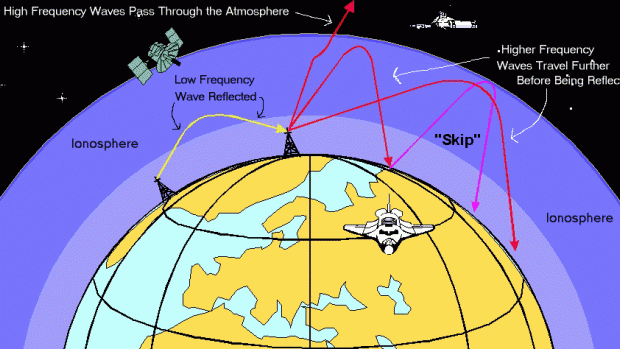
ionosphere

28-12-2023
Ionosphere
|
For Prelims: About ionosphere, About the study, Importance of study, Main features of ionosphere, Layers of ionosphere, About Total Electron Count (TEC) |
Why in the news?
Long-term seasonal ionospheric observations and solar activities were recently investigated at the Indian Antarctica station Bharati between 2010 and 2022 by a team of scientists from the Indian Institute of Geomagnetism (IIG), an autonomous body of the Department of Science and Technology (DST).
Important points:
- This study was published in the Journal of Polar Science.
About the study:
- Antarctica's cold, dark winters and hot, sunny summers hide a mystery in the ionosphere that scientists have recently discovered.
- Nearly a decade of ionospheric observations at Bharati Station in Antarctica found substantial seasonal variation with maximum total electron count (TEC) in the summer and winter equinox months.
- Scientists in the study found that the total electron count (TEC) in the ionosphere peaks in the region during the equinox months.
- Scientists attributed the extreme ionization to particle precipitation and the transport of convective plasma from high latitudes.
- Furthermore, during the summer months where 24-hour sunlight is present (polar days), the maximum ionospheric density was approximately twice that of polar nights over the Indian region.
- The diagram presented above shows the change of ionospheric density (in TEC units), color coded with time in the Y-axis and the year in the X-axis showing seasonality and solar activity affecting.
Importance of study:
- Such long-term studies can help us understand and mitigate the impacts of the ionosphere on satellite-based navigation and communication systems.
About ionosphere:
- The ionosphere is a part of the Earth's upper atmosphere that is partially ionized, extending 100–1000 km.
- The name "ionosphere" was first introduced in the 1920s.
- It was formally defined as "the part of the Earth's upper atmosphere" by a committee of the Institute of Radio Engineers in 1950.
- The ionosphere in the polar regions is highly dynamic and serves as a major energy sink for space weather phenomena and related processes in magnetosphere-ionosphere systems because the magnetic field lines are perpendicular in this region.
- Ionospheric observations are fewer in Antarctica than in the Arctic region due to geographical limitations and the limited number of stations.
- The density of the ionosphere is measured by ultraviolet instruments on the ionosphere, while pink light is used for nitrogen emission and green light is used for oxygen emission.
Main features of ionosphere:
- The ionosphere thins during the night as previously ionized particles loosen up and recombine back into neutral particles.
- Regarding the ionosphere, it is difficult to know what the ionosphere will be like at any particular time.
- It is home to all the charged particles in Earth's atmosphere.
- The ionosphere is the place where Earth's atmosphere meets space.
- It is home to several satellites.
- The ionosphere continues to shine.
- We study the ionosphere with invisible light.
Layers of ionosphere:
- The ionosphere was thought to be composed of several relatively distinct layers, denoted by the letters D, E, and F.
- The F layer was later divided into regions F1 and F2.
D:
- The D layer is the lowest ionospheric region at an altitude of about 70 to 90 km (40 to 55 mi).
- The D region differs from the E and F regions in that its free electrons disappear almost completely during the night, as they recombine with oxygen ions to form electrically neutral oxygen molecules.
E:
- The E layer is also called the Kenneally–Heaviside layer, named after the American electrical engineer Arthur E. Kenneally and the English physicist Oliver Heaviside in 1902.
- It extends from an altitude of 90 km (60 mi) to about 160 km (100 mi).
- Unlike the D region, the ionization of the E region persists at night, although it is significantly reduced.
F:
- The F layer extends upward from a height of about 160 km (100 mi).
- The concentration of free electrons is highest in this region.
About Total Electron Count (TEC):
- Total electron content (TEC) is an important descriptive quantity for the Earth's ionosphere.
- TEC is the total number of electrons integrated between two points along a tube of one meter square cross section.
- It is usually reported in multiples of the TEC unit, defined as TEC=10 16 el/m 2 ≈ .
- The ionospheric total electron content (TEC) can be estimated from the phase delay L i of the covert radio link at the frequency band f i (Hz).
Source: Hindustan Times